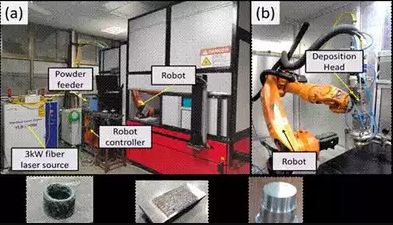An Indian scientist has developed a process for restoring high-value components such as moulds, turbine blades, and aircraft components that requires little human participation using a laser enabled DED additive manufacturing.
A damaged component that has to be repaired will be scanned autonomously for damage detection using a laser scanner, and the deposition path will be established using particular algorithms. The material will be deposited using a laser base directed energy deposition (DED) technology, followed by finishing and automated inspection of the repaired product.
Existing repair processes, such as welding and thermal spraying, are haphazard and lack accuracy and precision. Furthermore, all present technologies are manual, and the quality of repair is determined on the skill level of the person doing the task. The technology is projected to catapult the restoration and repair business to the next level, as well as establish a cutting-edge laser manufacturing environment that would enhance Atmanirbhar Bharat.
Ramesh Kumar Singh, a professor in IIT Bombay’s mechanical engineering department, invented the method that employs a laser for process control and insures restoration with improved quality and repeatability.
The technique, which was created with assistance from the department of science and technology’s advanced manufacturing technologies program, has been validated and tested. According to an S&T department statement, the created system comprises of a robotic restoration system that is meant to work autonomously for all critical tasks such as scanning route planning, damage identification, deposition, finishing, and inspection.
The final integration of the two systems– the laser-directed energy deposition and the defect scanning systems, is underway, and the project is at 7th stage of the Technology Readiness Level. Prof. Ramesh has allied with Bharat Forge, Aditya Birla Science and Technology Company and Interface Design Associates for its industrial uptake.
“The developed technology is very impactful, and a game-changer for the restoration and repair segment of the manufacturing industry and has huge market potential. The components which can be reconditioned via this technology are very high-value. The level of accuracy and precision, which is possible through this technology, is phenomenal and is far ahead of the current state-of-the-art methods,” added Professor Ramesh Singh.
Subscribe to AM Chronicle Newsletter to stay connected: https://bit.ly/3fBZ1mP
Follow us on LinkedIn: https://bit.ly/3IjhrFq
Visit for more interesting content on additive manufacturing: https://amchronicle.com/


